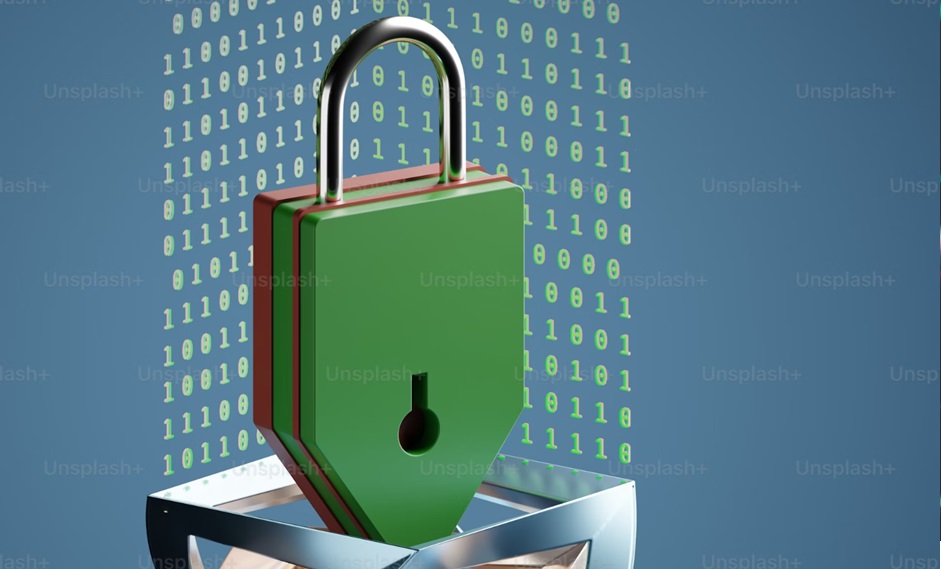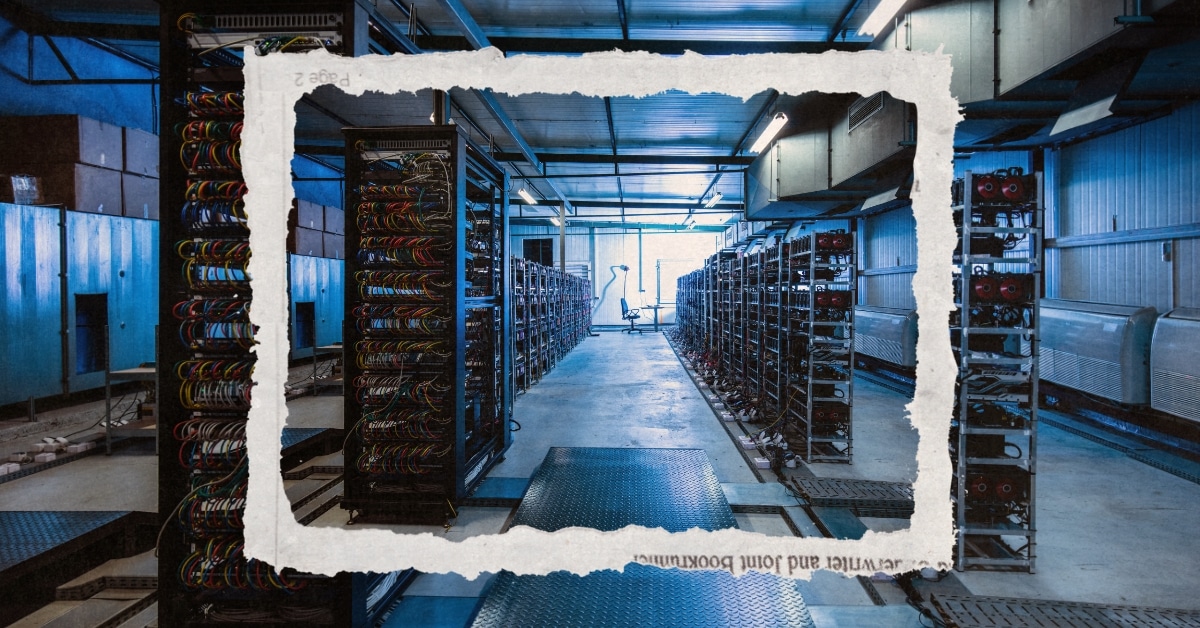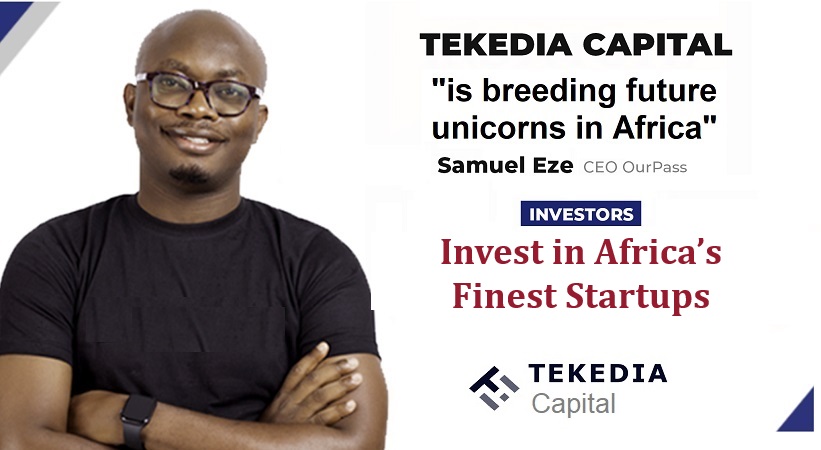News
10 regole per investire in criptovalute

Questa guida delinea 10 suggerimenti chiave per avere successo investendo in criptovaluta. Lo spazio crittografico presenta prospettive uniche ma anche sfide e rischi non incontrati nei mercati tradizionali. L’estrema volatilità, la complessità tecnica e l’incertezza normativa possono sopraffare i nuovi investitori. Ma seguendo i principi fondamentali dell’allocazione strategica delle risorse, dell’archiviazione sicura, della media del costo in dollari e dell’acquisto di progetti fondamentalmente solidi, puoi includere con attenzione le criptovalute come parte di un portafoglio ben bilanciato.
Punti chiave
- Investire in criptovalute, una classe di asset ancora nuova e volatile, segue molte delle stesse regole degli investimenti in altri mercati.
- La regola più importante è non investire mai più di quanto puoi permetterti di perdere.
- È essenziale conservare in modo sicuro le tue criptovalute in un portafoglio sicuro o con un servizio di custodia affidabile.
- Avvicinati a questo mercato con gli occhi ben aperti, pronto a impegnarti a lungo termine sulla base di ferme convinzioni, non di speculazioni a breve termine.
1. Non investire mai più di quanto puoi permetterti di perdere
Le criptovalute sono ancora asset relativamente nuovi ed estremamente volatili che possono guadagnare o perdere valore significativo in un solo giorno. Sebbene la tendenza a lungo termine sia stata rialzista, in questi mercati permangono ancora scetticismo e opportunismo.
Per questo motivo, il primo principio è investire solo la quantità di capitale che si è pienamente disposti a perdere in caso di recessione del mercato. Per lo meno, dovresti avere abbastanza risparmi di emergenza prima di investire fondi in criptovalute. Una volta che sei pronto per investire, non dovresti superare il 5% del tuo portafoglio. Ciò è sufficiente per ottenere esposizione a potenziali guadagni limitando al tempo stesso l’impatto delle perdite sul portafoglio complessivo.
2. Utilizzare la media del costo in dollari
Utilizzo media del costo in dollari per le criptovalute, che consiste nell’effettuare piccoli acquisti ricorrenti secondo un programma prestabilito, ad esempio settimanale o mensile. Automatizza questi acquisti tramite uno scambio anziché acquistare manualmente ogni volta.
La media del costo in dollari ti consente di costruire metodicamente una posizione evitando la psicologia di cercare di cronometrare perfettamente i massimi e i minimi del mercato. Di conseguenza, acquisteranno relativamente più criptovalute quando i prezzi scendono e meno quando aumentano, riducendo l’impatto della volatilità. Pagare alcune commissioni di transazione aggiuntive è spesso utile nel lungo termine. Puoi anche considerare di effettuare occasionalmente acquisti extra opportunistici quando il mercato scende in modo significativo.
3. Ricerca e attenimento ai fondamenti
Il controllo di un investimento in criptovalute implica parametri diversi dal mercato azionario. Questi spesso includono la valutazione del potenziale di adozione nel mondo reale, la revisione delle specifiche tecniche, lo studio dei fondatori e degli sviluppatori, la scansione del coinvolgimento della comunità e la valutazione dei concorrenti.
Preferisci progetti che sono stati testati nel tempo o che offrono funzionalità uniche non facilmente copiabili e che promettono un’adozione diffusa. Attenzione agli asset legati esclusivamente alla speculazione senza veri fondamentali.
I fondamenti cruciali per la ricerca sono l’utilità del token, la velocità e la scalabilità delle transazioni, la sicurezza della rete, i linguaggi di codifica utilizzati, la trasparenza del team e i vantaggi competitivi che ha rispetto alle criptovalute concorrenti.
4. Attenersi alle principali valute crittografiche
Gli asset crittografici grandi e consolidati come Bitcoin ed Ethereum godono di vantaggi di first mover e di adozione, hanno una grande capitalizzazione di mercato e sono legati a una serie di prodotti finanziari costruiti su di essi, come gli ETF e i mercati dei derivati. Queste famose monete hanno resistito a diversi cicli di mercato e recessioni significativi.
Sebbene i rischi permangano, le criptovalute più grandi hanno generalmente dimostrato la loro resilienza, a differenza delle monete più nuove o a bassa capitalizzazione. Tuttavia, se se ne presenta l’occasione, valuta la possibilità di riequilibrare le periodiche prese di profitto dalle attività principali in progetti più nuovi e promettenti con utilità nel mondo reale. Come con qualsiasi asset o titolo particolare, evita di sovrappesare pesantemente le principali criptovalute rispetto alle dimensioni complessive del tuo portafoglio di investimenti e alla tolleranza al rischio.
5. Utilizzare l’archiviazione sicura
Conserva considerevoli partecipazioni in criptovalute in a portafoglio hardware o con un custode di criptovalute fidato invece di lasciarli in uno scambio a lungo termine. I principali portafogli hardware includono Trezor e Ledger e alcuni portafogli basati su software come Electrum sono considerati sicuri. Questi forniscono protezioni di sicurezza rafforzate come archiviazione offline, crittografia, codici PIN, firme multiple, frasi di recupero e meccanismi anti-manomissione.
Conserva la frase di recupero in un luogo sicuro, ad esempio in una stanza chiusa a chiave o nel caveau di una banca. Non archiviare elettronicamente la frase di recupero; se necessario, crittografarlo o proteggerlo con password. Fai attenzione quando inserisci dati sensibili del portafoglio sui dispositivi. Utilizza password complesse e univoche.
6. Utilizzare il buon senso
Rimani obiettivo quando valutare gli investimenti in criptovalute. Non cadere preda della paura di perderti qualcosa, di monete meme speculative o di cicli pubblicitari. Inoltre, evita qualsiasi asset che prometta guadagni facili, rendimenti garantiti o qualsiasi cosa che sembri troppo bella per essere vera. Invariabilmente lo è.
Mantenere un portafoglio bilanciato tra più classi di attività. Non essere sovraesposto alle criptovalute. Controlla l’accuratezza di tutte le informazioni relative alle criptovalute prima di agire in base ad esse. Comprendi che gli investimenti in criptovalute rimangono altamente speculativi e sii pronto a ridurre le perdite se le tesi di investimento cambiano. Prendi in considerazione la possibilità di consultare consulenti finanziari a pagamento per ricevere indicazioni su misura per la tua situazione finanziaria e i tuoi obiettivi.
7. Prenditi il tempo per comprendere la tecnologia
Prenditi del tempo per conoscere la tecnologia sottostante che alimenta le diverse risorse crittografiche. Sapere come blockchain reti, meccanismi di consenso (ad esempio, proof-of-work vs. proof-of-stake), algoritmi di hashing e contratti intelligenti ti forniranno una visione migliore delle prospettive di un progetto.
Imparare le basi della crittografia ti aiuta anche a cogliere meglio il potenziale di prodotti come le prove a conoscenza zero. Iscriviti a pubblicazioni e blog di settore legittimi, indipendenti dalla criptovaluta in cui investi e rimani aggiornato sui nuovi sviluppi tecnologici nel settore.
8. Prestare attenzione ai tribunali e ai regolamenti
Segui i casi legali e gli sviluppi normativi rilevanti, nonché le proposte legislative relative alle criptovalute, sia a livello nazionale che all’estero. Le principali normative possono influenzare in modo significativo i prezzi e l’adozione. Ad esempio, quando la Cina ha vietato il mining di criptovalute, molti minatori hanno spostato le proprie operazioni. Rimani aggiornato anche sui cambiamenti di governance attuati dai progetti blockchain. Questi possono alterare sostanzialmente i rendimenti delle puntate, i finanziamenti per lo sviluppo e altre dinamiche.
9. Utilizzare gli indicatori crittografici per informare il processo decisionale
Mentre la volatilità delle criptovalute rende impossibili previsioni accurate, provate e vere indicatori tecnici come le medie mobili, la forza relativa e i crossover possono fornire segnali preziosi. I crossover delle medie mobili, ad esempio, possono identificare cambiamenti di slancio. Sono importanti anche nuovi indicatori specifici delle criptovalute come l’attività sulla catena, la dimensione del mempool, le commissioni medie di transazione, gli indirizzi in base al tempo di detenzione e così via.
La valutazione degli indicatori può aiutare a programmare meglio le entrate e le uscite. Combina l’analisi tecnica e quella basata su blockchain per una prospettiva più completa. Mantieni sempre una prospettiva a lungo termine anziché reagire alle oscillazioni giornaliere dei prezzi.
10. Rimani disciplinato
Creare un quadro solido e basato su regole. Un approccio sistematico basato su criteri predefiniti aiuta a tenere lontano il processo decisionale guidato dalle emozioni, che può essere costoso. Perfeziona continuamente il tuo portafoglio e la tua strategia in base alle lezioni apprese. Rimani flessibile e aperto a nuove informazioni invece di bloccarti rigidamente in un unico sistema.
Quanto del mio portafoglio dovrei destinare alle criptovalute?
La maggior parte degli esperti finanziari consiglia di limitare l’esposizione alle criptovalute a meno del 5% del portafoglio totale. Le criptovalute sono considerate una classe di asset ad alto rischio. Limitare l’allocazione aiuta a gestire la volatilità e il rischio complessivi. Chi è nuovo agli investimenti in criptovalute può iniziare con una percentuale compresa tra l’1% e il 2% come introduzione. Solo il capitale di rischio che puoi permetterti di perdere dovrebbe essere esposto alle oscillazioni dei prezzi delle criptovalute.
Quali sono le implicazioni fiscali dell’investimento in criptovalute?
Gli investimenti in criptovaluta possono creare obblighi fiscali complessi. Le plusvalenze e le minusvalenze devono essere segnalate ogni volta che vendi o scambi criptovalute. Le criptovalute lo sono trattati come beni dall’Agenzia delle Entrate, quindi sono soggetti alle stesse aliquote fiscali sulle plusvalenze a breve e lungo termine che si applicano ad altri asset come le azioni. Tuttavia, queste regole e classificazioni sono soggette a modifiche. Conserva registri dettagliati di tutte le transazioni crittografiche.
Che cos’è l’autocustodia delle criptovalute?
L’autocustodia avviene quando i proprietari di risorse digitali detengono e controllano le proprie chiavi private, che sono essenzialmente le password che garantiscono l’accesso a questi token e fondi. L’autocustodia può essere effettuata utilizzando dispositivi hardware, portafogli software o portafogli di carta.
Che cos’è un servizio di custodia delle criptovalute?
I custodi sono servizi di terze parti che conservano le risorse crittografiche e forniscono sicurezza contro minacce come attacchi hacker, frodi e perdita di chiavi private. Possono mitigare i rischi dell’autocustodia con protocolli e assicurazioni robusti. Per i grandi detentori di criptovalute, i custodi regolamentati aggiungono supervisione e controlli finanziari.
La linea di fondo
Gli investimenti in criptovalute comportano rischi sostanziali e dovrebbero essere affrontati con cautela. Questo mercato ancora nascente è soggetto a elevata volatilità e incertezza. Tuttavia, le criptovalute presentano anche un potenziale unico per coloro che sono disposti ad accettare rischi elevati. Allocando solo il capitale speculativo che puoi permetterti di perdere, facendo la media del costo in dollari nelle posizioni, concentrandoti su progetti fondamentalmente forti, utilizzando celle frigoriferee utilizzando una gestione disciplinata del portafoglio, puoi navigare in queste acque agitate con maggiore sicurezza.
Rimani obiettivo, pensa a lungo termine e considera i rischi delle criptovalute rispetto alle tue finanze complessive. Non inseguire guadagni fugaci. Il mercato delle criptovalute continuerà a maturare e l’adozione è in costante crescita. La pazienza e la diligenza rimangono virtù essenziali nel mondo degli asset digitali e della finanza decentralizzata.
I commenti, le opinioni e le analisi espresse su Investopedia sono solo a scopo informativo e non devono essere considerati consigli di investimento individuali o raccomandazioni per investire in qualsiasi titolo o adottare qualsiasi strategia di investimento. Anche se crediamo alle informazioni fornite
qui è affidabile, non ne garantiamo l’accuratezza o la completezza. Le opinioni e le strategie descritte nei nostri contenuti potrebbero non essere adatte a tutti gli investitori. Investire in criptovalute e offerte iniziali di monete (“ICO”) è altamente rischioso e speculativo e i contenuti relativi alle criptovalute su Investopedia non costituiscono una raccomandazione a investire in criptovalute o altre ICO. Poiché la situazione di ogni individuo è unica, è necessario consultare sempre un professionista qualificato prima di prendere qualsiasi decisione finanziaria. Investopedia non rilascia dichiarazioni o garanzie in merito all’accuratezza o alla tempestività delle informazioni contenute nel presente documento.
News
US Cryptocurrency Rules Delayed by ‘Never-Ending’ Lawsuits

Ripple CEO says cryptocurrency industry still seeking regulatory clarity from US
Speaking to Bloomberg News on Wednesday (July 17), Author: Brad Garlinghouse he said America is behind behind other countries which have already adopted cryptocurrency regulations.
“What we’re seeing, where it’s the UK, Japan, Singapore… even the European Union, more than two dozen countries have come together to provide a framework for cryptocurrency regulation,” Garlinghouse said.
“It’s frustrating that we as a country can’t get that regulatory framework in place. And instead, we have this never-ending lawsuit coming from the SEC that doesn’t really address the problem.”
Ripple has been the target of some of these legal disputes. Securities and Exchange Commission (SEC) sued the company in 2020, accusing it of conducting a $1.3 billion operation offering of unregistered securities tied to its XRP token.
However, last year a judge ruled that only Ripple’s institutional sales of XRP, not retail sales, violated the law, a decision widely seen as a victory for the cryptocurrency industry.
As PYMNTS noted at the time, that ruling has “far-reaching repercussions impact across the digital asset ecosystem, which has long maintained that its tokens do not represent securities contracts.”
However, Garlinghouse told Bloomberg on Wednesday that the company cannot wage multimillion-dollar legal battles over each token.
He spoke to the news agency from the Republican National Convention in Milwaukee, where the party is backing the candidacies of former President Donald Trump and Ohio Sen. J.D. Vance, both of whom are considered pro-cryptocurrency.
But Garlinghouse argued that cryptocurrencies “should not be a partisan issue,” and noted that he had recently attended a conference in Washington that included Democrats, including White House officials.
“I think they were there, listening to the industry… it was refreshing to start having that conversation,” she said.
President Joe Biden earlier this year he vetoed a measure which would have ended the SEC’s special rules for crypto-asset custodians. This legislation was supported by both the digital asset industry and the banking industry.
Ripple early this year donated $25 million to the cryptocurrency industry’s super PAC Fair Smoothiewith Garlinghouse stating at the time that such donations would continue every year, as long as the industry had its detractors.
Second Open SecretsWhich monitor spending For campaigns, the PAC has spent $13.4 million this year, much of it to help defeat Rep. Katie Porter’s (D-Calif.) U.S. Senate campaign.
News
The Future of Cybersecurity in the Cryptocurrency Industry

The cryptocurrency space has had a tumultuous journey, with its fair share of ups and downs. As we look to the future, one area that remains a constant focus is cybersecurity. The digital nature of cryptocurrencies makes them inherently vulnerable to cyber threats, and as the industry evolves, so does the landscape of potential risks.
In 2022, the cryptocurrency market faced significant challenges, with over $2 trillion in market value lost. This event served as a wake-up call for the industry, highlighting the need for robust cybersecurity measures. The future of cryptocurrency security is expected to see a shift towards more regulated and established institutions taking the reins of crypto technology and blockchain infrastructure.
The decentralized nature of cryptocurrencies offers numerous benefits, such as transparency and financial inclusion. However, it also introduces unique security challenges. The risk landscape is filled with threats such as hacking, phishing, ransomware attacks, malware, and social engineering. These threats not only lead to financial losses, but also damage the reputation and trust within the cryptocurrency ecosystem.
Mini-MBA Tekedia edition 15 ((September 9 – December 7, 2024) started recordings; Register today for discounts reserved for early bird customers.
Tekedia AI in Business Masterclass Opens registrations Here.
Join the Tekedia Capital Syndicate and IInvest in Africa’s best startups Here.
The decentralized nature of cryptocurrencies offers many benefits, but it also presents unique security challenges. Cyber risks such as hacking, phishing, and ransomware pose threats to the integrity of digital assets. The infrastructure that supports cryptocurrencies is not immune to vulnerabilities, including smart contract flaws and exchange hacks.
To address these vulnerabilities, the infrastructure that supports cryptocurrencies must be strengthened. Smart contract vulnerabilities, exchange hacks, wallet breaches, and flaws in the underlying blockchain technology are significant concerns that must be addressed to ensure the security and integrity of digital assets.
As cybercriminal tactics and techniques become more sophisticated, the cryptocurrency industry must stay ahead of the curve. The future will likely see more targeted attacks, exploiting weaknesses in infrastructure, networks, and human factors. This requires a proactive and multifaceted approach to cybersecurity.
To mitigate these risks, several measures must be adopted:
Strengthening security measures: Developers, exchanges, and wallet providers must improve security protocols, use strong encryption, implement multi-factor authentication, and conduct regular security audits.
Education and awareness: Users should be educated on best practices for protecting their digital assets, including using strong passwords, recognizing phishing attempts, and using hardware wallets for secure storage.
Looking ahead, the cryptocurrency industry is expected to see an increased focus on robust security measures. Blockchain projects and exchanges are likely to invest in advanced encryption techniques and decentralized storage solutions to protect user assets. The future impact of cyber risk on cryptocurrencies will depend on the collective efforts of stakeholders to address vulnerabilities and strengthen security measures.
Collective efforts by stakeholders in the cryptocurrency space are crucial to address vulnerabilities and strengthen security measures. While challenges persist, advances in cybersecurity technologies and practices offer hope for a more secure and resilient cryptocurrency ecosystem.
The future of cybersecurity in the cryptocurrency industry depends on finding a balance between innovation and regulation. It requires a collaborative effort from all parties involved, from developers to end users, to create a secure environment that fosters trust and growth in the industry. As we move forward, it is critical that lessons learned from past events guide the development of stronger security measures, ensuring the longevity and stability of cryptocurrencies as a vital part of the modern economic toolkit.
Like this:
Like Loading…
News
Bullish XRP and RLBK price predictions rise, outpacing the broader cryptocurrency market, prompting Shiba Inu holders to switch!

Bitcoin’s one-week surge from $60,000 has pushed other cryptocurrencies into an uptrend. However, for many altcoins, this trend has been temporary. Altcoins such as XRP and Shiba Inu (SHIB) have experienced price drops. However, Rollblock, a new altcoin on the Ethereum blockchain, has thrived during this period, attracting thousands of investors looking for long-term growth.
XRP’s Nearly 30% Growth Over Last Week Drops as Selling Pressure Increases
XRP is seeing further price decline as Ripple investors withdraw their profits from the token. The surge in XRP’s price to $0.64 in the past week has provided investors with a perfect opportunity to increase their returns in the short term. With the ongoing sell-off in XRP, XRP has jumped over 8% in the past day and is now trading at $0.59. However, analysts tracking XRP indicators predict that XRP could still extend its gains by over 30% in the coming weeks.
Shiba Inu (SHIB) marks its third consecutive day of losses
Shiba Inu (SHIB) is in a period of adjustment after a week of strong gains. In the last 24 hours, SHIB has seen a jump of over 7%, reflecting a natural market fluctuation. Analysts are observing a death cross on the Shiba Inu chart, which historically signals the potential for future opportunities as the market stabilizes. As investors explore new possibilities, some are diversifying into promising altcoins like Rollblock (RBLK) to strategically rebalance their portfolios and capitalize on the emerging trend.
Rollblock (RBLK) Up Another 7% as New Investors Join Pre-Sale
Rollblock (RBLK) has taken the cryptocurrency market by storm, having attracted investors from more popular altcoins like Shiba Inu (SHIB) and XRP. Rollblock’s growth is attributed to its utility in the $450 billion global gaming industry.
Rollblock aims to use blockchain technology to bridge the gap between centralized and decentralized gambling. With blockchain technology, Rollblock secures every transaction in its online casino, providing transparency and convenience to millions of players who are uncomfortable placing bets on other iGaming platforms.
This innovative use of blockchain technology in the industry has grown Rollblock to over 4,000 new users in less than two months. With plans to add sports betting, this number is expected to grow exponentially in Q3.
Rollblock uses a revenue sharing model that splits up to 30% of its casino’s weekly profits with token holders. This happens after Rollblock buys back $RBLK from the open market and uses half of it for rewards. The other half is burned to increase the price of $RBLK.
Rollblock price has seen four increases in the past month with $RBLK tokens now selling for $0.017. Analysts predict that at the current growth rate, Rollblock could increase by over 800% before the presale ends. For investors looking for a long-term token with growth potential, phase four is the best time to buy Rollblock before its price skyrockets!
Discover the exciting Rollblock (RBLK) pre-sale opportunities now!
Website:https://Rollblockpresale.io/
Social: https://linktr.ee/Rollblockcasino
No spam, no lies, just insights. You can unsubscribe at any time.
News
Texas Crypto Miners Turn to AI as Crypto Declines

As cryptocurrency mining becomes less profitable, Texas cryptocurrency mining companies are switching to supporting artificial intelligence companies.
Bitcoin miners, with their sprawling data centers and access to significant energy resources, are ideally suited for computationally intensive AI operations, and as cryptocurrency mining becomes less profitable, companies see this shift as a logical answer to their problems.
On Thursday, Houston-based Lancium and Denver-based Crusoe Energy Systems announced a multibillion-dollar deal to build a 200-megawatt data center near the West Texas city of Abilene to support advanced artificial intelligence applications such as medical research and aircraft design, CNBC reported. The plant represents the first phase of a larger 1.2 gigawatt project.
Lancium and Crusoe’s move into AI mirrors a broader trend among bitcoin miners. The combined market capitalization of the top U.S.-listed bitcoin miners hit a record $22.8 billion in June. Companies like Bit Digital and Hut 8 are diversifying into AI, with Bit Digital securing a $92 million annual revenue deal to supply Nvidia GPUs and Hut 8 raising $150 million to expand its AI data center.
But the growing popularity of these operations also presents challenges, particularly for the Texas power grid. Last month, the Electric Reliability Council of Texas announced that the state is expected to nearly double its energy production by 2030 to meet the high energy demands of data centers and cryptocurrency operations.
Lieutenant Governor Dan Patrick expressed concern about the projections.
“Cryptocurrency miners and data centers will account for more than 50% of the additional growth. We need to take a close look at these two sectors,” He wrote on Twitter/X. “They produce very few jobs compared to the incredible demands they place on our network. Cryptocurrency miners could actually make more money selling electricity to the network than they do from their cryptocurrency mining operations.”
Analysts predict significant growth in data center power capacity, which is expected to account for up to 9% of U.S. electricity consumption by 2030.
The operations also pose challenges for nearby cities. Earlier this month, TIME reported that a crypto-mining facility was seriously compromising the health of residents in the city of Granbury. TIME reported more than 40 people with serious health problems, including cardiovascular disease, high blood pressure and hearing loss. At least 10 of the residents needed to go to the emergency room or an urgent care facility.
The disturbances were caused by the extreme noise generated by the crypto-mining facility’s fans, which are used to keep the machines cool. While the proposed data center in Abilene would use liquid cooling systems, it’s still unclear whether the facility’s operations would pose a health risk to local residents.
-

 Nfts12 months ago
Nfts12 months agoShardLab Launches ZK-Based Tool for Digital Identity and NFT Vouchers
-

 News1 year ago
News1 year agoWallet recovery firms are abuzz as stranded cryptocurrency investors panic in the bitcoin boom
-

 Bitcoin12 months ago
Bitcoin12 months agoBitcoin, Ethereum, Solana and Cryptocurrency Markets Look Ready to ‘Send’ as Stars Align, According to Investor Chris Burniske
-

 Altcoins11 months ago
Altcoins11 months agoThree Altcoins Poised for Significant Growth in 2024: ETFS, OP, BLAST
-

 Altcoins11 months ago
Altcoins11 months agoAccumulate these altcoins now for maximum gains
-

 Nfts12 months ago
Nfts12 months agoOG Crypto Artist Trevor Jones Unveils Groundbreaking Collection of Ordinals | NFT CULTURE | NFT News | Web3 Culture
-

 Bitcoin12 months ago
Bitcoin12 months agoBillionaires are selling Nvidia stock and buying an index fund that could rise as much as 5,655%, according to some Wall Street analysts
-

 Videos8 months ago
Videos8 months agoKamala just won the boner! [Bad For Crypto]
-

 Videos1 year ago
Videos1 year agoLIVE FOMC 🚨 Could be CATASTROPHIC for Altcoins!
-

 Videos1 year ago
Videos1 year agoSTOCK MARKET FUD! ⚠️ [Why This Is GREAT For Bitcoin Traders!]
-

 Videos1 year ago
Videos1 year agoAttention: a historically significant BITCOIN signal has just appeared!
-

 News1 year ago
News1 year agoA Guide for Newcomers & Beginners – Forbes Advisor







